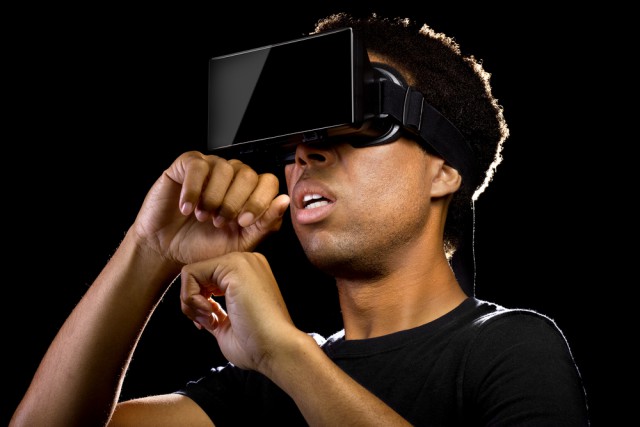What are the differences between AR and VR?

Now that HTC Vive has become available, we seem to have moved past virtual reality that gives you motion sickness and we can really start to grasp its impact on various business sectors. From reinventing tourism and the music industry to changing marketing and shopping behaviors, businesses are already starting to integrate VR solutions into their strategies and plans.
But with Mark Zuckerberg recently saying he thinks VR is still ten years away from being mainstream, it’s worth examining why.
With Virtual Reality Comes Augmented Reality
The impact of both virtual and augmented reality (VR and AR) is still being questioned. Investment firm Piper Jaffray predicts the size of both markets to reach $5.4bn (£3.8bn) by 2025, likening them to the early ages of mobile phones 15 years ago. Digi-Capital predicts that VR and AR will grow to $150bn (£105bn) by 2020, with $120bn (£84bn) attributed solely to AR.
This seems fairly optimistic considering that newer AR experiences are only just following up the failure of Google Glass. So how can they be so sure that VR hasn’t usurped AR’s market position?
Including Reality
It comes down to the fact that AR doesn’t exclude reality, but rather includes it, which could be key to bringing mixed reality to the masses. While VR offers an immersive world that leaves reality behind, AR allows both worlds to coexist, which may be more appealing to people who already feel they spend too much time alone in front of a screen and not enough communicating with colleagues, friends, and loved ones in real life. This inclusiveness might be vital in bridging the gap between gamers and early adopters, and the mainstream consumer market.
AR headsets, such as Microsoft’s Hololens and Magic Leap, are poised to disrupt the headset and mixed reality marketplace, despite their higher price point. But it’s a smaller company that is beating both the heavy hitters to the playing field, while undercutting them as well. The Meta 2 put its developer’s kit out on March 4, offering a wider range of vision than the Hololens. It also demonstrated just last week how two people can pass virtual objects between them, sharing their mixed reality experience in real time.
Ultimately, both AR and VR can offer companies advantages that didn’t previously exist, from accelerating the business cycles and enabling richer experiences, to enhanced visualization and making what was once inaccessible accessible. But the next real differentiator, one promised by both technologies, will come in the success of real time collaboration and interaction.
Measuring Potential
One of the biggest factors that will be key to determining VR’s mainstream potential is the ability to socialize and interact with real world friends, family, colleagues, and clients in the virtual world.
At the moment VR is still a singular experience, but if it can offer ways to enhance real-world relationships by putting people from different geographic locations together in a virtual space where they can collaborate and share experiences, then more people will be likely to embrace it.
AR on the other hand is more useful for collaborating in person in mixed reality, and that the ultimate result is to create one headset that does both equally well. At this point, it is just a matter of seeing who gets there first.
Amelia Kallman, innovation consultant at Engage Works
Published under license from ITProPortal.com, a Net Communities Ltd Publication. All rights reserved.
Photo Credit: Rommel Canlas/Shutterstock